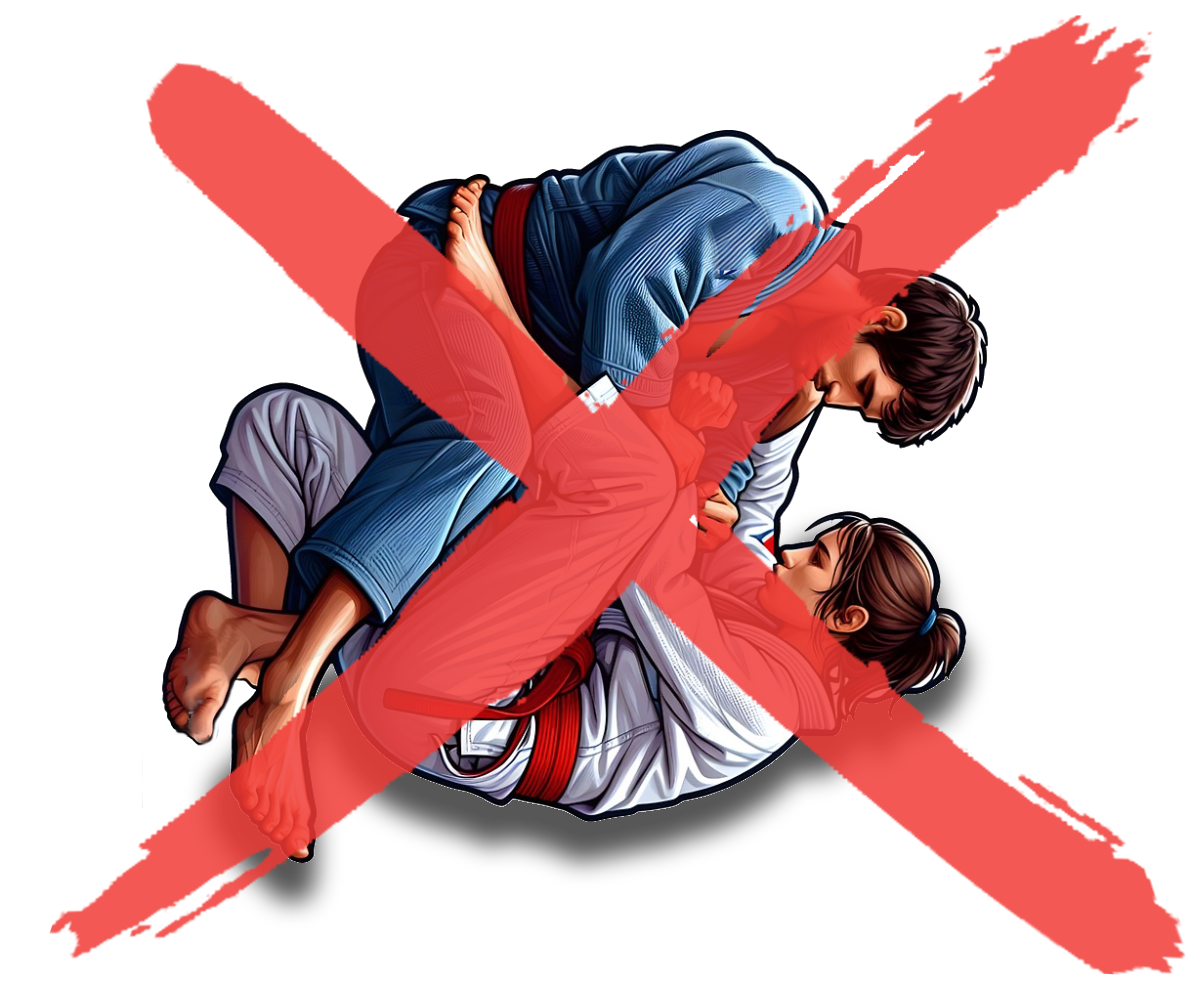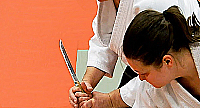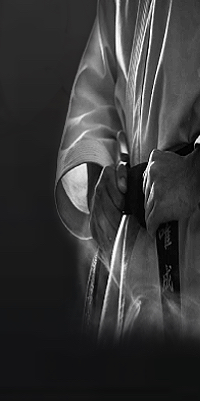Training
ShinKenDo JuJutsu training offers a practical and holistic approach to self-defense that strengthens both the body and mind. Each session begins with a structured warm-up that warms the body and enhances focus and awareness. Then, it progresses to pair-based repetition exercises simulating realistic situations, where students practice practical applications of hand placement, timing, and control. Students partner up to train joint locks, holds, and situational awareness under real speed and pressure. Weapon defense is also a key element of the curriculum, preparing students to respond calmly and accurately to threats using knives or sticks.
This training emphasizes the harmony of mind, technique, and body, fostering discipline, awareness, and personal growth through the refinement of techniques.
Classes are held in an atmosphere filled with respect, friendship, and focus, welcoming individuals of all ages and backgrounds.
Through continuous practice, students not only improve their physical fitness and self-defense abilities but also gain natural confidence that can be applied in daily life. The dojo is not just a training space but a sanctuary for reflection, connection, and growth. Here, people from different generations and professions come together to pursue self-discipline and human understanding.
Training
Class Training
Class training begins with a gentle warm-up, followed by full-body stretching. After that, students move on to theoretical learning, where they study the mechanisms and applications of various striking techniques. The core of the class consists of practical exercises in pairs, alternating between offense and defense, repeatedly practicing joint strikes and restraints. The session ends with a cool-down that includes light stretching and physical conditioning, followed by inner discipline practices such as breathing exercises and Tai Chi. This helps achieve mental clarity, relaxation, and a deeper sense of unity with the training.
Knife Defense
ShinKenDo JuJutsu training takes a realistic perspective on modern self-defense, focusing on knife defense as a contemporary threat rather than the traditional sword. Emphasis is placed on practical knife defense techniques based on timing, movement, and control. Students learn to understand the unpredictability and speed of knife attacks, mastering avoidance, limb control, and rapid neutralization.
Joint Locks
Training places a strong emphasis on joint locks, with a rich variety of techniques targeting different parts of the body. Students learn practical and effective locking techniques for the shoulder, wrist, arms, legs, knees, and ankles, developing the ability to control or neutralize an attacker. These techniques are based on precision and leverage, not force, making them accessible to people of any body type.
Escape Techniques
Training in escape techniques emphasizes understanding both the physical and psychological aspects of real-life encounters. The nature of attacks varies, such as male vs. male or male vs. female, and students learn to respond accordingly. The key is to use timing, positioning, and technique rather than relying on strength. Techniques for escaping from grabs, restraints, holds, and chokes are practiced, aiming for a quick and precise response to ensure a safe escape.
Striking Techniques
Striking techniques are highly practical, direct, and efficient,
targeting vulnerable areas such as the eyes, throat, groin, and joints,
with immediate effect. Kicks, in particular, are practical and focus on
targeting areas below the waist while maintaining balance and minimizing
exposure during contact. Attacks to the knees, shins, and groin are
effective for quickly neutralizing an attacker without losing stability or control.

We Do Not Focus on Ground Fighting
In modern times, the term "Jujutsu" has become increasingly linked with Brazilian Jiu-Jitsu (BJJ),
a system that places heavy emphasis on ground fighting and submission grappling.
This association has led many to mistakenly believe that BJJ and traditional Japanese
Jujutsu are essentially the same. However, while both systems share historical roots,
they are fundamentally different in their philosophy, training objectives, and real-world
applicability. Japanese Jujutsu, especially in its classical or self-defense forms,
encompasses a broader range of techniques beyond grappling and was historically designed
for battlefield survival.
Sport-based martial arts like BJJ are governed by a strict set of rules designed for
safety and competition. These regulations often exclude actions that would be critical
in a real-life altercation—such as striking vulnerable areas, defending against weapons,
or handling multiple opponents. While BJJ practitioners develop technical proficiency in
submissions and positional control, this rule-based structure can foster a false sense of
security in environments that do not follow sport protocols. In contrast, traditional systems
like ShinKenDo JuJutsu focus on adaptability, efficiency, and realism in hostile or
unpredictable situations.
From a self-defense perspective, over-reliance on grappling presents several serious disadvantages.
When engaged in ground combat, a person's mobility is limited, visibility is restricted,
and awareness of the surrounding environment is greatly diminished. These conditions are
dangerous, particularly if multiple attackers are involved or if the environment includes
hazardous elements such as hard concrete, broken glass, or gravel. Ground fighting also l
eaves a defender vulnerable to surprise attacks or weapon threats from unseen assailants,
making it an undesirable position unless absolutely unavoidable.
To address these limitations, ShinKenDo JuJutsu prioritizes remaining on one's feet
whenever possible. The system integrates standing joint locks, strikes, and takedowns u
sed strategically for control—not prolonged engagement on the ground. While students are t
rained in takedowns and ground escape techniques, the emphasis is always on regaining a
standing position swiftly and efficiently. Techniques are adapted to real-world variables,
including clothing, confined spaces, and the unpredictable nature of violence outside the
dojo or tournament setting.
Moreover, paired ground training, especially in traditional environments, can sometimes i
ntroduce moments of physical discomfort. The close-contact nature of grappling means that
accidental contact with sensitive areas of the body can occur, particularly when techniques
involve complex positioning of the limbs or torsos. While this is often unintentional,
it may lead to embarrassment or awkwardness, especially for newer students or those
unaccustomed to such intimacy in training. By maintaining a more balanced and situational
approach, systems like ShinKenDo JuJutsu ensure that self-defense training remains both
practical and respectful.
 国際真拳道柔術日本
国際真拳道柔術日本

